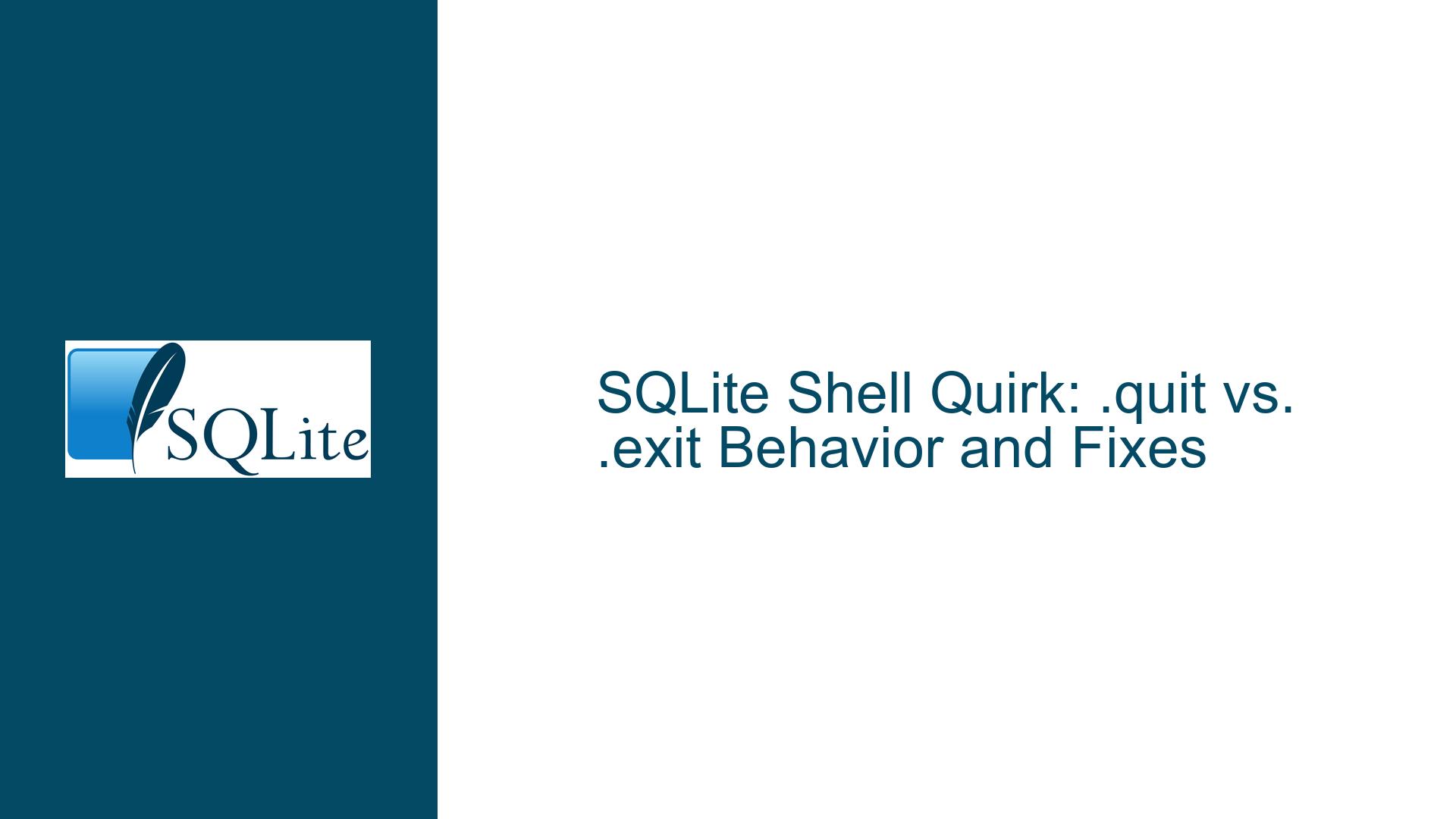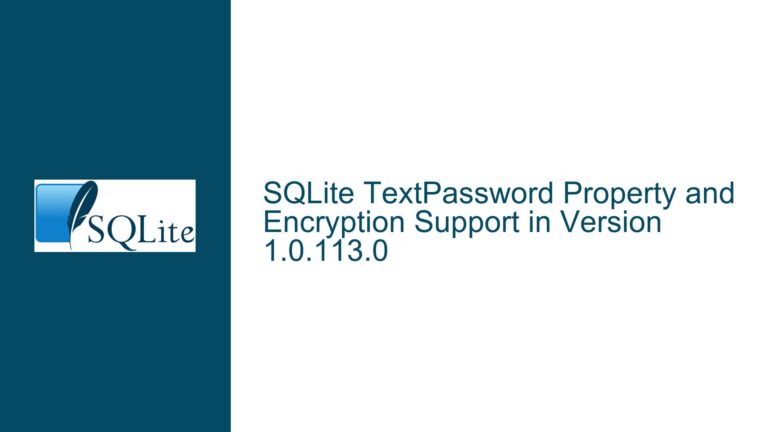SQLite Shell Quirk: .quit vs. .exit Behavior and Fixes
SQLite Shell Command Parsing and Execution Quirks
The SQLite shell (sqlite3) is a powerful command-line tool for interacting with SQLite databases. However, its behavior when processing commands like .quit and .exit can be unintuitive, especially when used with the -cmd option. This quirk often leads to confusion, particularly in scripting scenarios where precise control over the shell’s behavior is required. The issue revolves around how the SQLite shell interprets and executes commands passed via the -cmd option, and how it handles the termination of the session.
When invoking the SQLite shell with the -cmd option followed by .quit or .exit, the shell does not always terminate as expected. For example, running sqlite3 -cmd .quit results in the shell starting up, displaying the version information, and then waiting for further input instead of terminating immediately. This behavior is counterintuitive because the -cmd option is designed to execute a command before entering interactive mode. The expectation is that .quit or .exit should terminate the session immediately, but this is not always the case.
The issue becomes more pronounced when combined with other options like -bail. The -bail option is intended to stop execution after encountering an error, but it also affects how the shell processes .quit and .exit. For instance, sqlite3 -bail -cmd .quit terminates the session as expected, but without -bail, the shell does not terminate. This inconsistency suggests that the shell’s command parsing logic has subtle nuances that are not immediately obvious.
Command Parsing Logic and Edge Cases
The root cause of this behavior lies in how the SQLite shell parses and executes commands passed via the -cmd option. When the shell is invoked with -cmd, it processes the command before entering interactive mode. However, the shell’s internal logic treats .quit and .exit differently depending on the context in which they are executed. Specifically, the shell does not immediately terminate when .quit or .exit is passed via -cmd unless certain conditions are met.
One possible explanation is that the shell’s command parser treats .quit and .exit as special commands that are only effective in interactive mode. When these commands are passed via -cmd, the shell may not recognize them as termination commands until it enters interactive mode. This interpretation is supported by the observation that .quit and .exit work as expected when entered interactively but fail to terminate the session when passed via -cmd.
Another factor contributing to this behavior is the shell’s handling of the -bail option. The -bail option modifies the shell’s error handling behavior, causing it to terminate immediately after encountering an error or a termination command. When -bail is used with -cmd .quit, the shell terminates as expected because the -bail option forces the shell to treat .quit as a termination command. Without -bail, the shell does not recognize .quit as a termination command when passed via -cmd, leading to the observed behavior.
Resolving Command Parsing Issues and Ensuring Consistent Behavior
To address these issues and ensure consistent behavior, several steps can be taken. First, it is important to understand the nuances of the SQLite shell’s command parsing logic and how it interacts with the -cmd and -bail options. This understanding can help identify the conditions under which .quit and .exit will terminate the session as expected.
One approach is to modify the shell’s command parsing logic to recognize .quit and .exit as termination commands regardless of the context in which they are executed. This would involve updating the shell’s source code to treat these commands as special cases when passed via -cmd. By doing so, the shell would terminate immediately when .quit or .exit is passed via -cmd, eliminating the need for additional options like -bail.
Another approach is to use alternative methods to terminate the shell session when scripting. For example, instead of relying on .quit or .exit, scripts can use the -bail option in combination with a command that forces the shell to terminate. This approach leverages the existing behavior of the -bail option to ensure that the shell terminates as expected.
In addition to these solutions, it is important to document the behavior of .quit and .exit when used with the -cmd option. Clear documentation can help users understand the limitations of these commands and avoid common pitfalls when scripting with the SQLite shell. By providing detailed examples and explanations, users can learn how to use these commands effectively and avoid unexpected behavior.
Finally, testing and validation are crucial to ensuring that any changes to the shell’s command parsing logic do not introduce new issues. Thorough testing should be conducted to verify that .quit and .exit behave consistently across different scenarios and that the shell terminates as expected when these commands are used in scripts.
In conclusion, the behavior of .quit and .exit in the SQLite shell can be unintuitive, particularly when used with the -cmd option. By understanding the underlying command parsing logic and implementing appropriate fixes, it is possible to ensure consistent and predictable behavior. Whether through code changes, alternative scripting methods, or improved documentation, addressing these issues can enhance the usability of the SQLite shell and reduce frustration for users.






